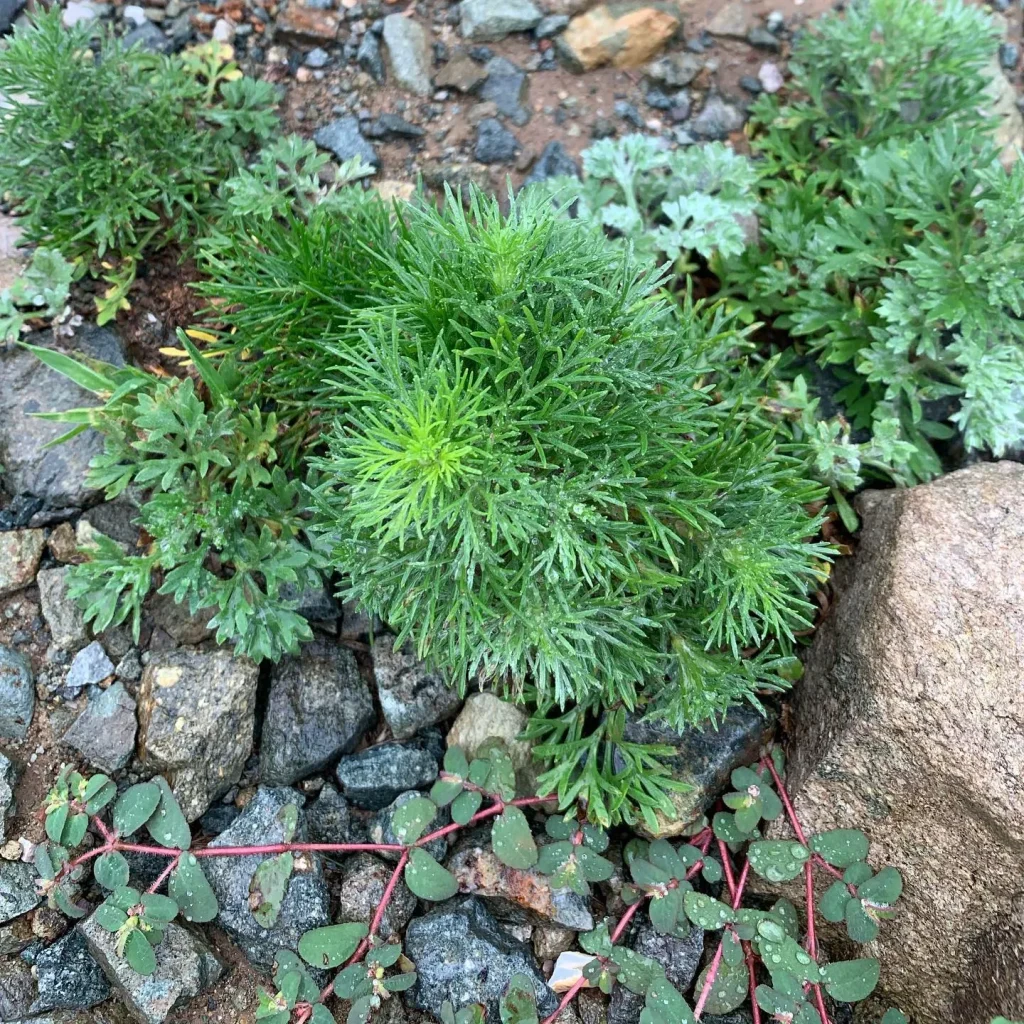
What is Microbiota Decussata?
Microbiota decussata, a monotypic species within the genus Microbiota, belong to the Cupressaceae family, is a coniferous gem that has made quite an impact in my garden. Commonly known as Siberian Carpet Cypress or Russian Cypress, Microbiota decussata is a hardy, low-growing shrub native to the mountainous regions of Eastern Siberia.. It’s a slow-growing shrub, reaching a mature height of just 8-20 inches, but it compensates with an impressive spread of up to 6.5 feet. The true magic lies in its foliage. Imagine soft, fern-like sprays of scale-like leaves in a vibrant green. As the seasons change, these sprays transform into a tapestry of bronze, purple, and even hints of red, adding a touch of drama to your garden.
But Microbiota decussata is more than just a pretty face. It’s incredibly hardy, tolerating temperatures as low as -40°F. Plus, it’s resistant to pests and diseases, making it a low-maintenance choice for busy gardeners like myself.
How to plant Microbiota Decussata?
Now that you’re captivated by Microbiota decussata’s charms, let’s get down to the practicalities of planting it. Here’s what you need to know:
Finding the Perfect Spot:
Microbiota decussata thrives in full sun to partial shade. While it tolerates some shade, aim for at least 4-6 hours of direct sunlight daily for optimal growth and vibrant foliage color.
Soil Preparation:
Microbiota decussata isn’t fussy about soil type, but well-drained soil is key. If your soil leans towards clay, amend it with compost or sand to improve drainage. Aim for a slightly acidic to neutral pH level (around 6.0-7.0).
Planting Process:
Dig a hole twice the width of the root ball and slightly deeper. Gently loosen the roots of your Microbiota decussata and place it in the hole. Ensure the root ball sits level with the surrounding soil. Backfill the hole, tamping down the soil gently to remove air pockets. Water thoroughly to settle the soil.
How to care for Microbiota Decussata?
Once planted, caring for Microbiota decussata is a breeze.
Watering:
Microbiota decussata is drought-tolerant once established, but regular watering, especially during the first growing season, is crucial. Aim to water deeply when the top inch of soil feels dry.
Fertilizing (Optional):
Microbiota decussata isn’t a heavy feeder. A light application of a balanced fertilizer in early spring can be beneficial, but it’s not strictly necessary.
Pruning:
Microbiota decussata requires minimal pruning. However, if you need to control its size or shape, light pruning can be done in late winter or early spring.
Pests and Diseases:
As mentioned earlier, Microbiota decussata is relatively resistant to pests and diseases. However, keep an eye out for common garden problems like aphids or scale insects. If you notice any issues, treat them with organic methods whenever possible.
Winter Protection:
Microbiota decussata is incredibly cold-hardy, but young plants might benefit from a layer of mulch around the base in very cold winters.
Bringing Harmony to Your Garden with Microbiota Decussata
Microbiota decussata’s versatility makes it a valuable addition to various garden designs. Here are some ideas for incorporating it into your landscape:
- Groundcover: Plant Microbiota decussata in swathes to create a lush, low-maintenance carpet.
- Border Edging: Its low-growing nature makes it perfect for defining flower beds or pathways.
- Rock Gardens: The feathery foliage adds a textural contrast to rocks and complements other drought-tolerant plants.
- Container Planting: Microbiota decussata thrives in containers, making it ideal for patios, balconies, or even indoors with ample light.
Companion Planting:
Microbiota decussata pairs well with a variety of plants:
- Spring-flowering bulbs like tulips or daffodils add a pop of color.
- Ornamental grasses like Miscanthus sinensis with its graceful swaying plumes create a dynamic textural contrast.
- Low-growing perennials such as creeping phlox or sedum complement Microbiota decussata’s form and provide bursts of color throughout the season.
- Even small flowering shrubs like Korean spicebush can be stunning companions, adding vertical interest and seasonal blooms.
Final Thoughts: A Reliable, Low-Maintenance Ground Cover
Overall, Microbiota decussata has been a rewarding addition to my garden. For anyone seeking a low-maintenance, resilient, and visually dynamic ground cover, I can’t recommend it enough. Its unique qualities—from the seasonal color shift to its compatibility with various landscaping styles—make it a versatile plant with a lot of potential. This species holds a permanent place in my conifer collection, and I look forward to seeing how it continues to evolve with each season.
Whether you’re an avid conifer collector or just looking for a hardy, low-growing ground cover, Microbiota decussata is worth considering. Its ability to thrive in tough climates and its striking aesthetic appeal make it a standout choice for anyone interested in landscaping with minimal maintenance.
If i die, water my plants!



